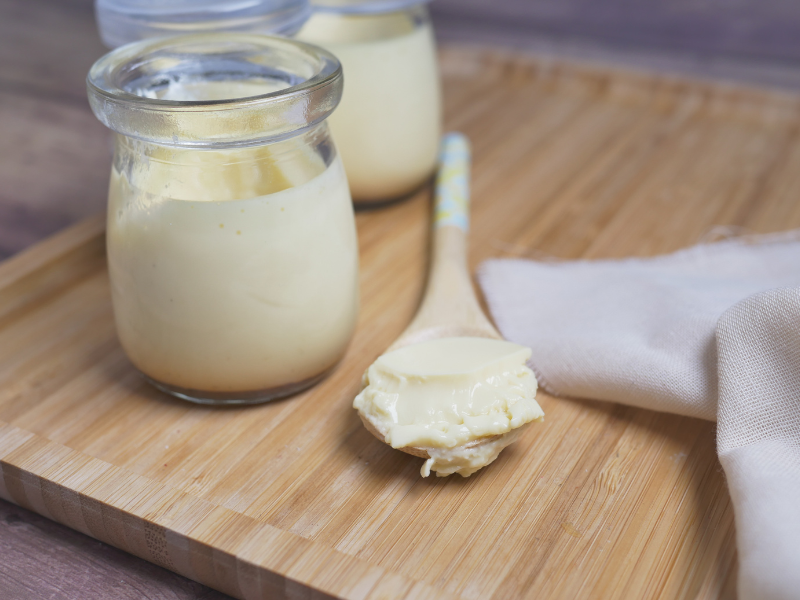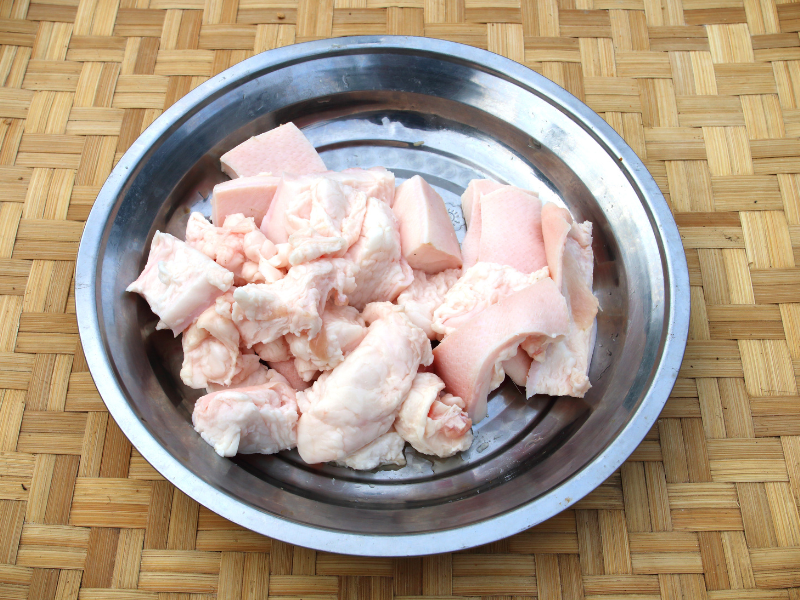How to Make Beef Tallow at Home
posted on
November 6, 2024

Curious about beef tallow? This versatile, old-school fat is making a comeback, and for good reason!
Tallow isn’t just for cooking—it’s a fantastic ingredient for homemade skincare, too. Rendering tallow is surprisingly easy, and if you’ve got some quality beef fat (or access to it), you can make your own right at home.
Here’s everything you need to know to get started with homemade beef tallow.
What is Beef Tallow?
Tallow is rendered beef fat that’s been melted down, strained, and stored for later use. It’s packed with healthy saturated fats and is a popular choice among traditional cooks and DIY skincare fans alike.
Unlike many store-bought fats, tallow has a high smoke point, making it ideal for frying, roasting, and even sautéing.
Plus, if you get your fat from grass-fed beef like ours, tallow is a nutrient powerhouse with a nice dose of vitamins A, D, E, and K.

Step-By-Step Recipe for Beef Tallow
Ingredients:
- 2-5 pounds of Edwards Family Farms beef fat
Instructions:
- Prepare the Fat
- Start by trimming any bits of meat off the fat to prevent burning. Then, chop the fat into small chunks, or if you’ve got a meat grinder, run it through for a finer texture. Smaller pieces help the fat melt down faster and more evenly.
- Render the Fat
- Place your fat pieces in a large pot or slow cooker, and set it on low (around 225°F). Slow and steady is the goal here—you don’t want the fat to brown, just to melt. Give it a stir every so often to keep things moving.
- Strain It Out
- After a few hours, the fat will have melted completely. Now, it’s time to strain. Place a fine-mesh sieve or cheesecloth over a bowl or jar, then carefully pour the melted fat through to remove any solids.
- Cool & Store
- Pour the strained liquid tallow into jars or containers and let it cool until it solidifies into a creamy, shelf-stable fat. It’ll be firm at room temperature and can last for months!
Generally, you can expect 1 pound of beef fat to yield between 1 and 2 cups of rendered beef tallow
Storage Tips:
- Store in a cool, dark place, or for even longer shelf life, keep it in the fridge. Your tallow is now ready for action!
Why Make Your Own Tallow?
Homemade tallow is pure, natural, and you know exactly where it’s coming from—especially if you source quality beef fat from a farm you trust. Plus, it’s incredibly versatile.
Here are a few ways to put that tallow to work:
- In the Kitchen: Use it for frying, roasting, or even as a butter substitute in savory dishes. The flavor is mild, but it brings a rich quality that elevates any meal.
- For Skincare: Tallow’s nutrient-dense profile makes it ideal for balms and lotions. Use it as a base for DIY skincare recipes, or simply apply a tiny bit directly on your skin for a moisturizing treat. Click here for a tallow soap recipe.
Making tallow is a simple, satisfying way to use every part of the animal and make your pantry a little more self-sufficient. Give it a try and see just how handy this golden fat can be.


If you're going to use your tallow for all things delicious, feel free to stop after jarring up the tallow. But if you're going to want to turn your tallow into luxurious soaps and other things, you'll have a couple more steps.
You can use your tallow as is, but I prefer to purify. I find the end product after purifying has less of a beef scent and has a more pure white color.
I recommend using a large stainless steel bowl to strain your tallow into if you're planning on purifying it, it's just easier to work with than the jars.
- Invert the bowl, and bang out the hardened tallow.
- Chop the tallow coarsely, and place it back into the pot along with 2 cups of water and 1 tablespoon sea salt. If you're purifying large quantities of tallow, use a larger pot and more water and salt keeping the 2:1 ratio.
- Re-melt the tallow and bring to a low simmer. Simmer for 3-4 hours, to allow most of the water to evaporate. During the simmering, skim off any foam or impurities that float along the surface.
- After simmering, strain the liquid into a clean stainless steel bowl and allow to harden, at least overnight. This will allow the fat and any remaining moisture to separate.
- The next day, invert the bowl over the sink, to capture all the water, and chop up your tallow to be wrapped for storage in the fridge or freezer until you're ready to make soaps!
Click here to buy beef tallow fat.






